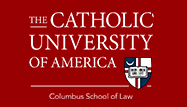Document Type
Article
Publication Date
2024
Abstract
For over 125 years, jurists and scholars who have championed judicial restraint have looked back to James Bradley Thayer’s 1893 Harvard Law Review article, The Origin and Scope of the American Doctrine of Constitutional Law, as the seminal authority for the rule that courts should presume the constitutionality of a challenged law and only invalidate it if its unconstitutionality is “clear” and “beyond a reasonable doubt.” But Thayer presented those three rules (presumption of constitutionality, clear error rule, and reasonable doubt standard) as rooted in historical legal practice in America. And yet none of his twentieth or twenty-first century acolytes systematically checked to determine the accuracy of his historical account or discover whether those rules really did become widely accepted and deeply rooted in American legal practice, mostly relying instead upon Thayer’s say-so. Meanwhile, some prominent historians have disputed his account of the history, and many leading originalists have disputed different elements of Thayer’s thesis, some disagreeing with the presumption of constitutionality, others the clear error rule, and still others the reasonable doubt standard.
Recommended Citation
Derek A. Webb, The Lost History of Judicial Restraint, 100 Notre Dame L. Rev. 289 (2024).

